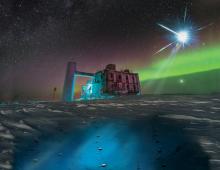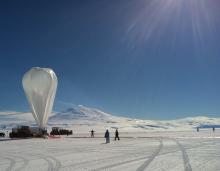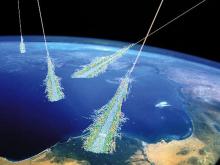Listen to today's episode of StarDate on the web the same day it airs in high-quality streaming audio without any extra ads or announcements. Choose a $8 one-month pass, or listen every day for a year for just $30.
You are here
Cosmic Warning System
Cosmic rays can be dangerous. They can damage electronics on the ground and in space, and harm travelers in space and in aircraft.
But they also can be helpful. Scientists use them to monitor the amount of water in the soil — an important measurement for agriculture and other applications. And it may be possible to use those readings to look for harmful outbursts.
Cosmic rays are particles from beyond the solar system. They’re created by exploding stars and other powerful events. The number that hit Earth is controlled by the Sun. When the Sun is active, it blocks most of them. When it’s quiet, it lets them through.
When an outburst of cosmic rays reaches Earth, it can zap high-altitude aircraft. There’s a global warning network, but it has only a few dozen stations, so much of the world isn’t covered.
Cosmic rays seldom make it all the way to the surface. They ram into atoms and molecules in the atmosphere, creating showers of other particles that then reach the surface. Some of the particles hit water molecules in the soil, creating their own reactions. Networks of sensors use those reactions to measure the soil’s water content.
British scientists studied those networks. They found that the sensors recorded a couple of big cosmic-ray outbursts over the last decade. And with a little work, they could be adapted to create a real-time alert system — providing an extra layer of protection against a cosmic hazard.
Script by Damond Benningfield






